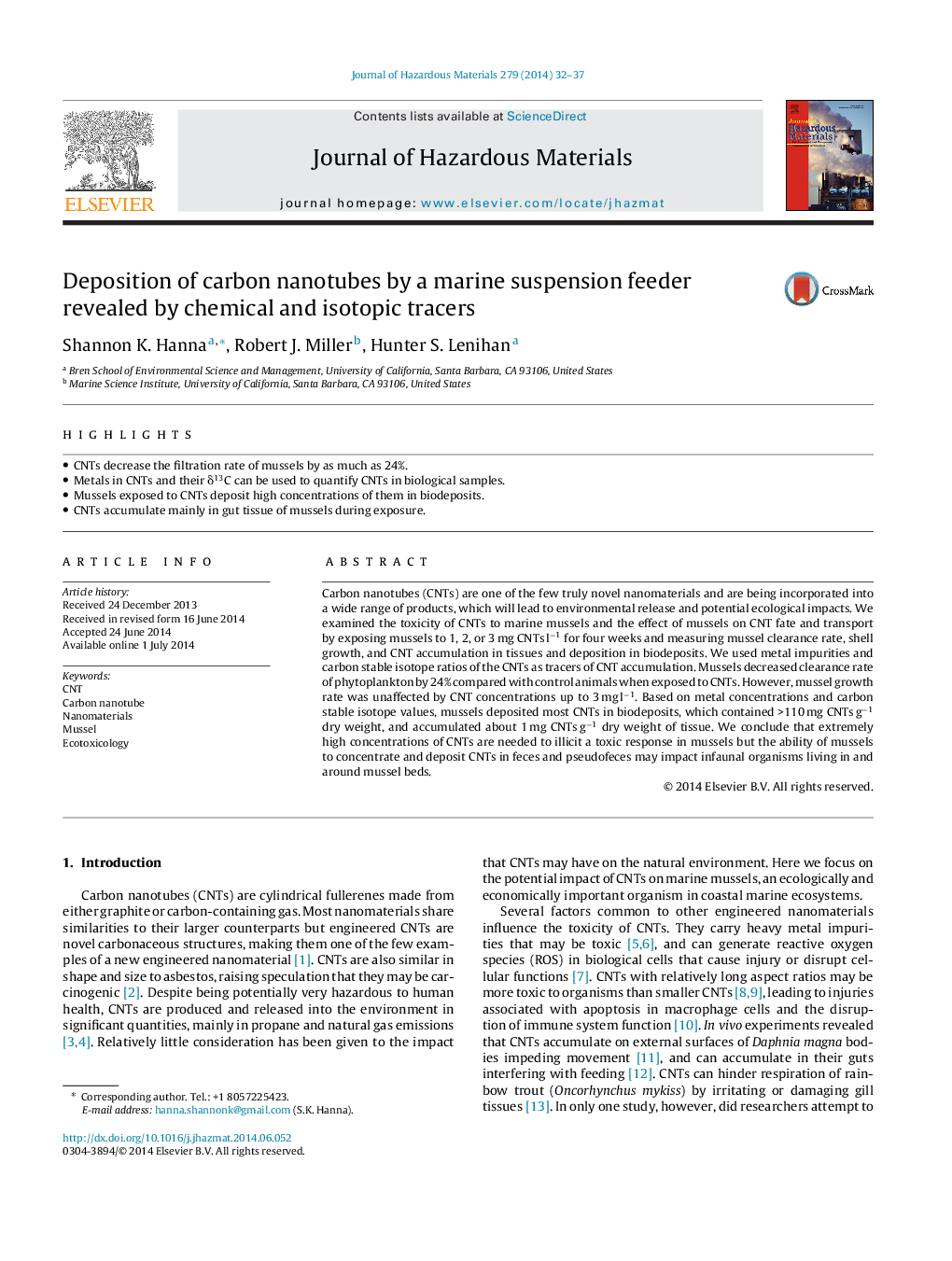| Article ID | Journal | Published Year | Pages | File Type |
|---|---|---|---|---|
| 576579 | Journal of Hazardous Materials | 2014 | 6 Pages |
Abstract
Carbon nanotubes (CNTs) are one of the few truly novel nanomaterials and are being incorporated into a wide range of products, which will lead to environmental release and potential ecological impacts. We examined the toxicity of CNTs to marine mussels and the effect of mussels on CNT fate and transport by exposing mussels to 1, 2, or 3 mg CNTs lâ1 for four weeks and measuring mussel clearance rate, shell growth, and CNT accumulation in tissues and deposition in biodeposits. We used metal impurities and carbon stable isotope ratios of the CNTs as tracers of CNT accumulation. Mussels decreased clearance rate of phytoplankton by 24% compared with control animals when exposed to CNTs. However, mussel growth rate was unaffected by CNT concentrations up to 3 mg lâ1. Based on metal concentrations and carbon stable isotope values, mussels deposited most CNTs in biodeposits, which contained >110 mg CNTs gâ1 dry weight, and accumulated about 1 mg CNTs gâ1 dry weight of tissue. We conclude that extremely high concentrations of CNTs are needed to illicit a toxic response in mussels but the ability of mussels to concentrate and deposit CNTs in feces and pseudofeces may impact infaunal organisms living in and around mussel beds.
Related Topics
Physical Sciences and Engineering
Chemical Engineering
Chemical Health and Safety
Authors
Shannon K. Hanna, Robert J. Miller, Hunter S. Lenihan,
